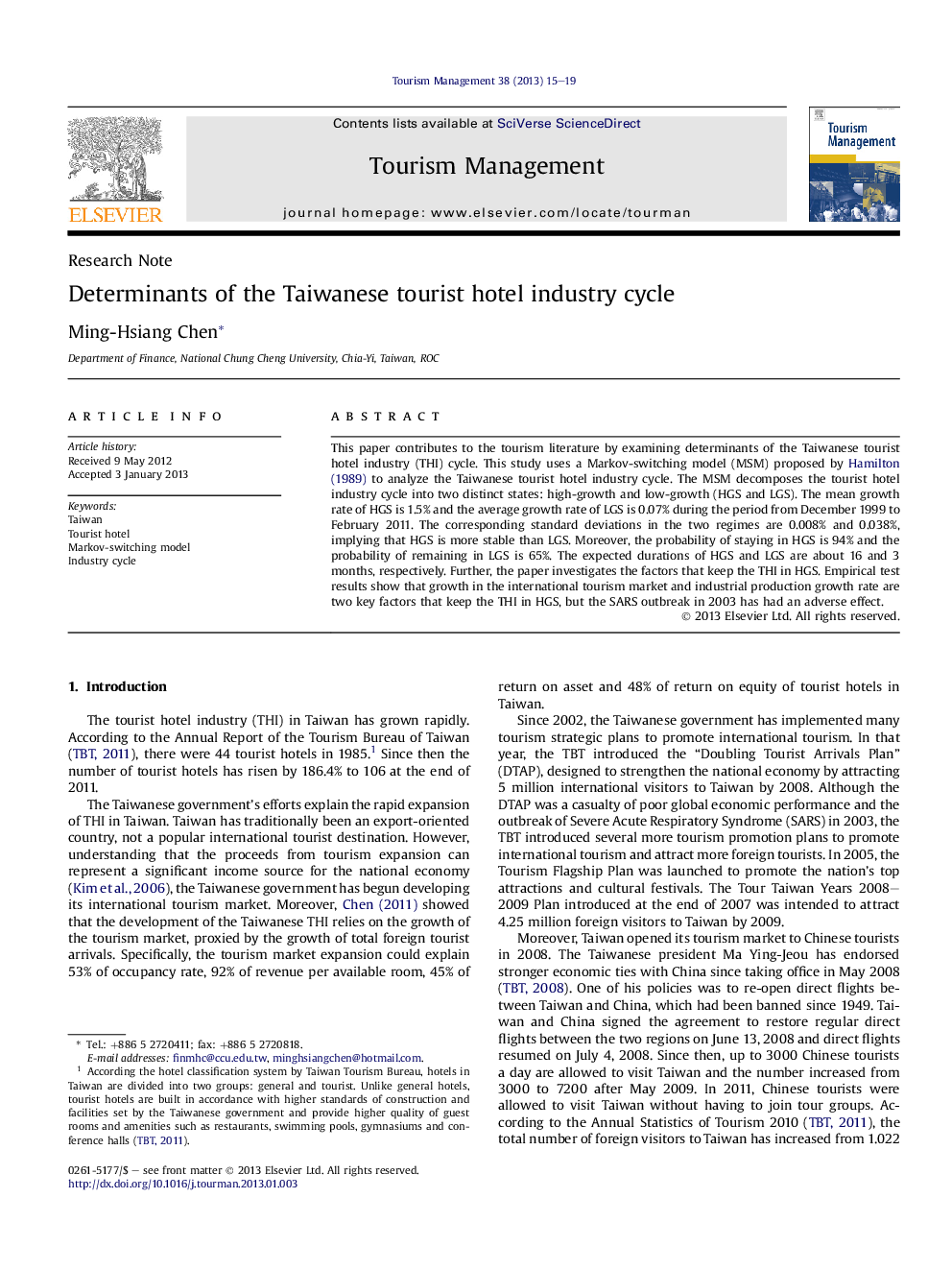| Article ID | Journal | Published Year | Pages | File Type |
|---|---|---|---|---|
| 1012159 | Tourism Management | 2013 | 5 Pages |
This paper contributes to the tourism literature by examining determinants of the Taiwanese tourist hotel industry (THI) cycle. This study uses a Markov-switching model (MSM) proposed by Hamilton (1989) to analyze the Taiwanese tourist hotel industry cycle. The MSM decomposes the tourist hotel industry cycle into two distinct states: high-growth and low-growth (HGS and LGS). The mean growth rate of HGS is 1.5% and the average growth rate of LGS is 0.07% during the period from December 1999 to February 2011. The corresponding standard deviations in the two regimes are 0.008% and 0.038%, implying that HGS is more stable than LGS. Moreover, the probability of staying in HGS is 94% and the probability of remaining in LGS is 65%. The expected durations of HGS and LGS are about 16 and 3 months, respectively. Further, the paper investigates the factors that keep the THI in HGS. Empirical test results show that growth in the international tourism market and industrial production growth rate are two key factors that keep the THI in HGS, but the SARS outbreak in 2003 has had an adverse effect.
